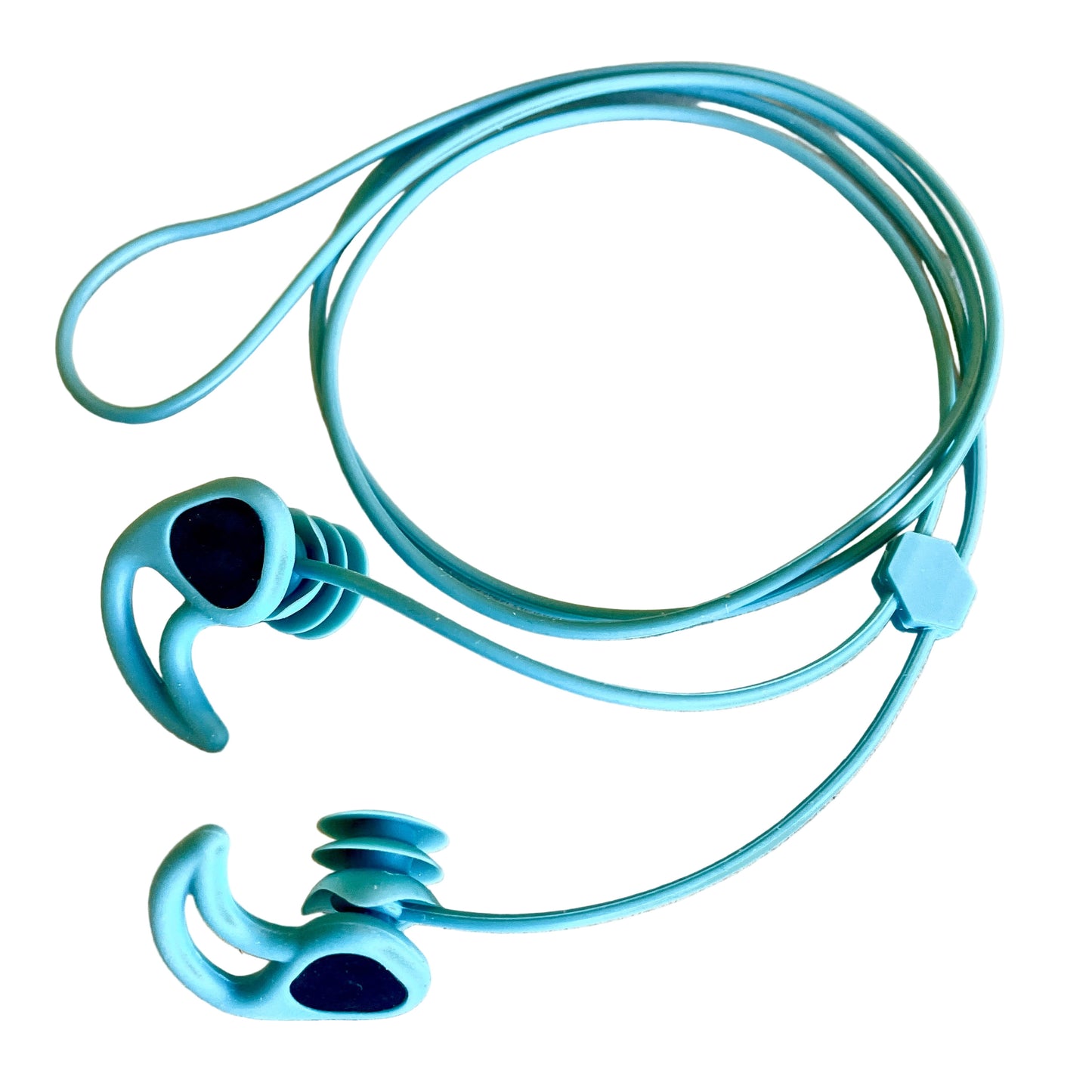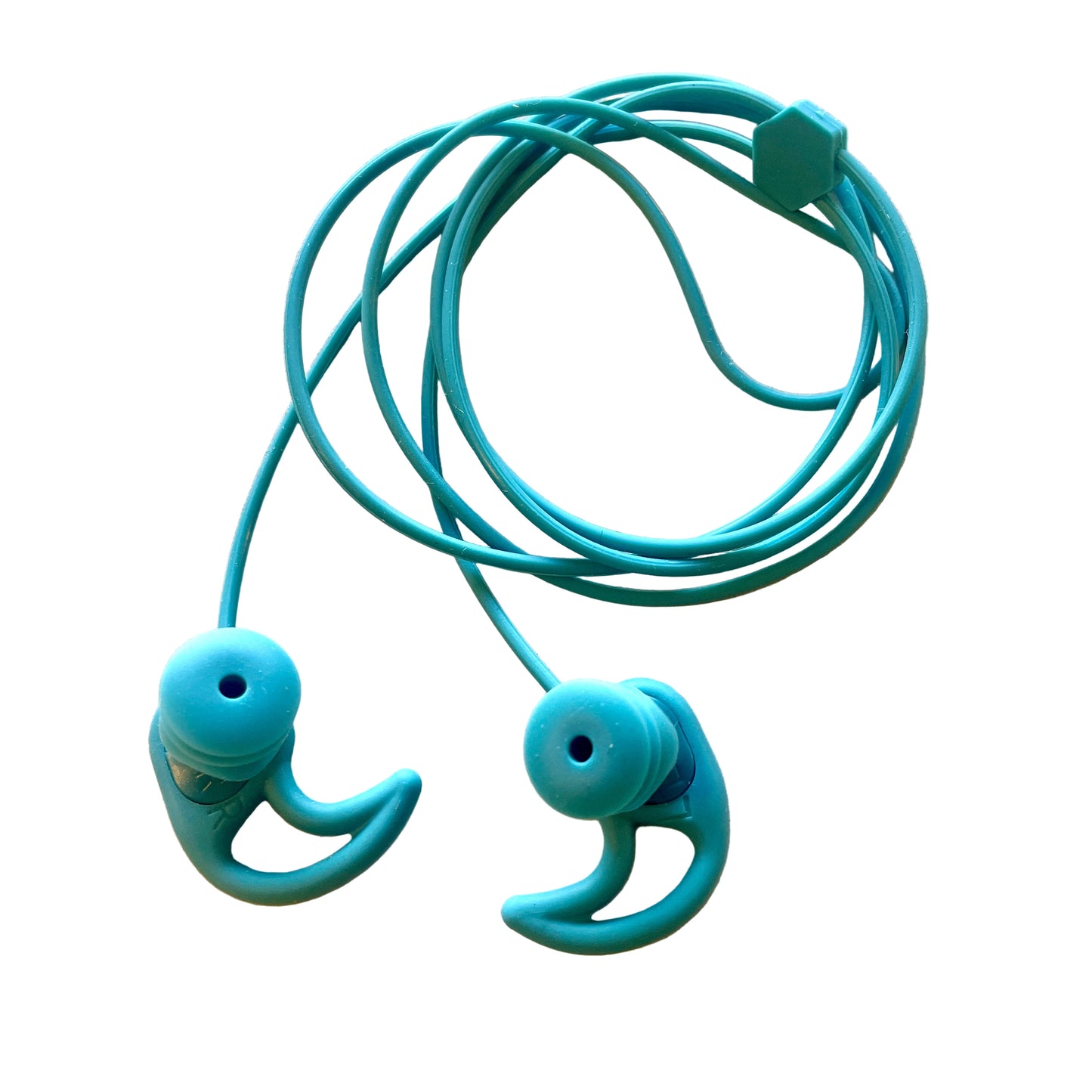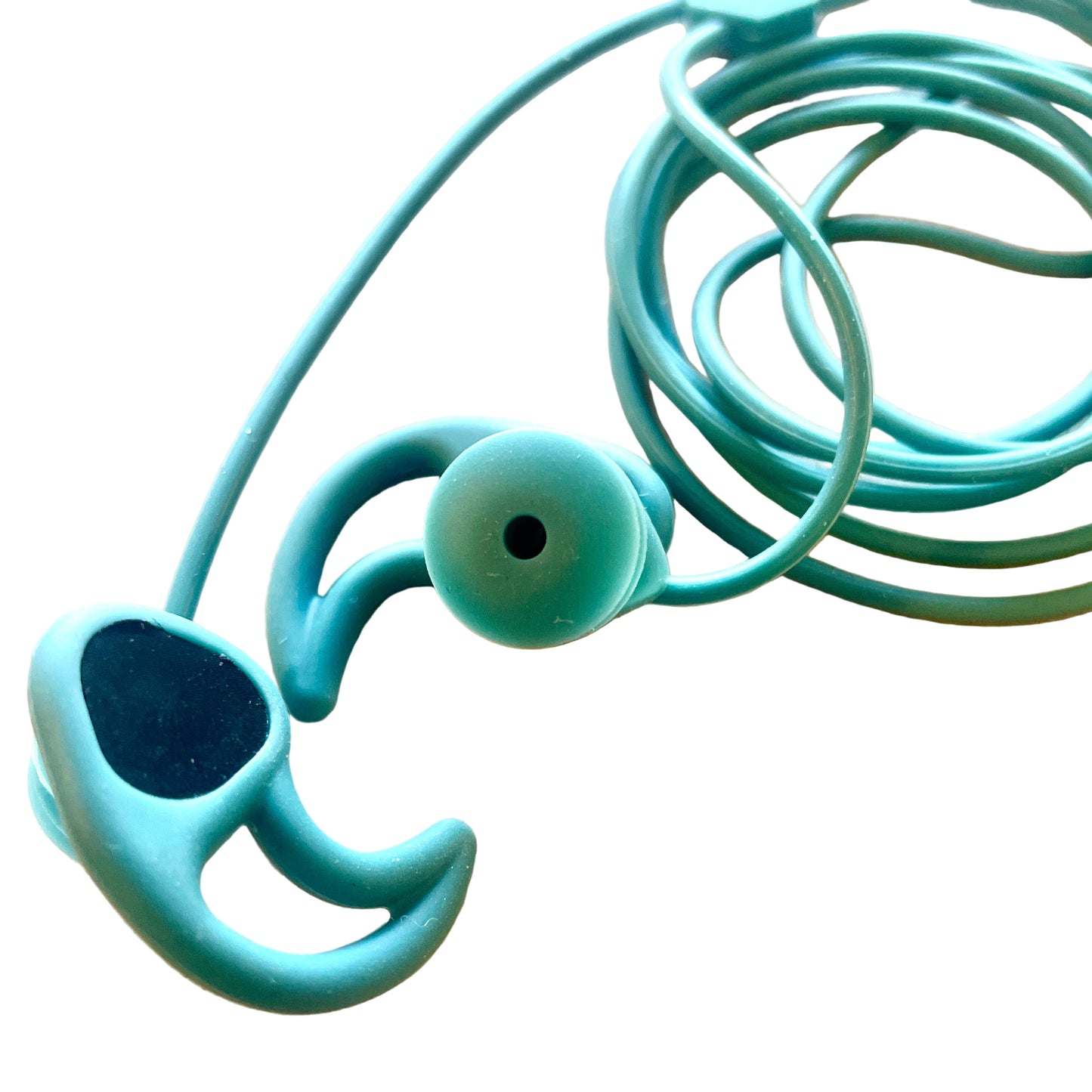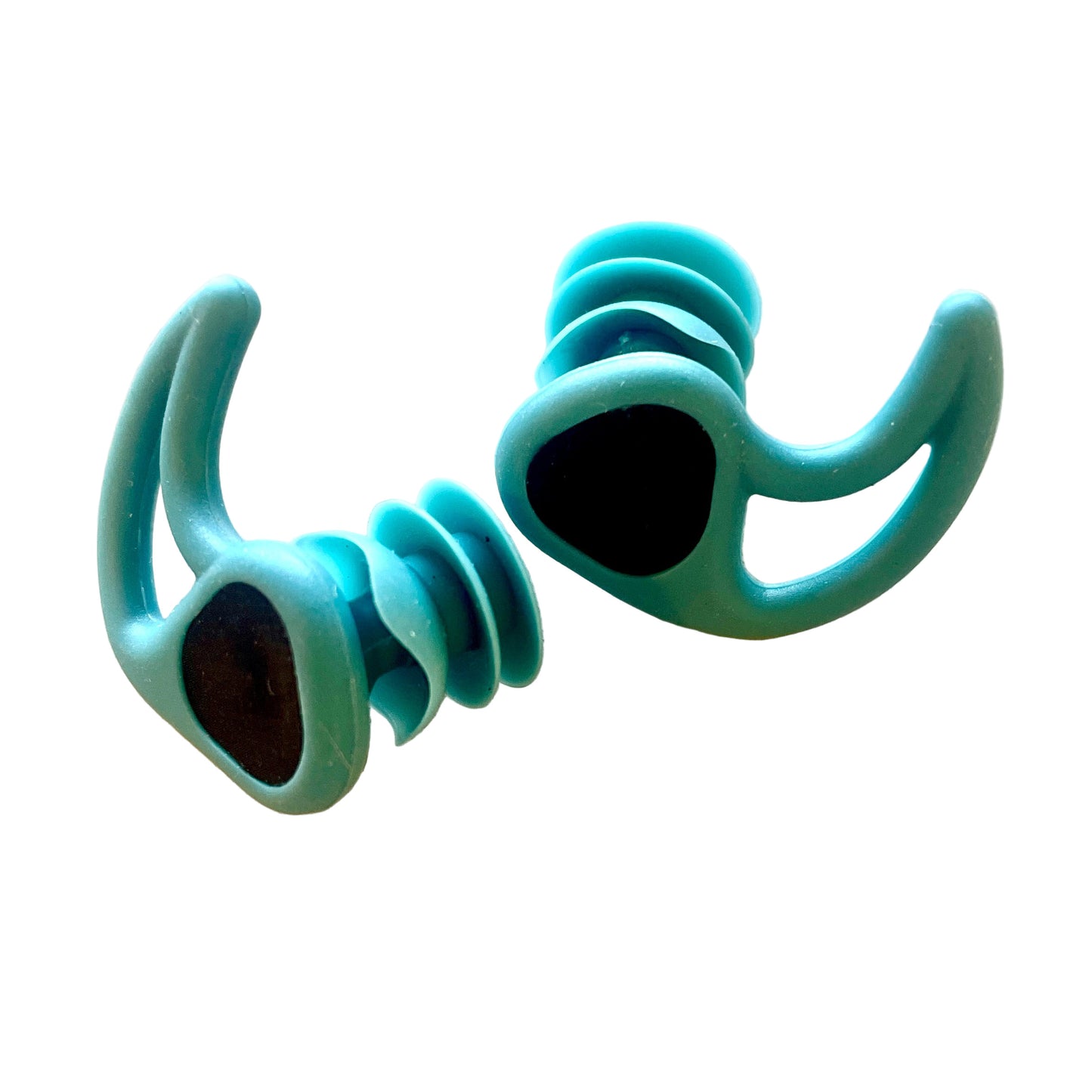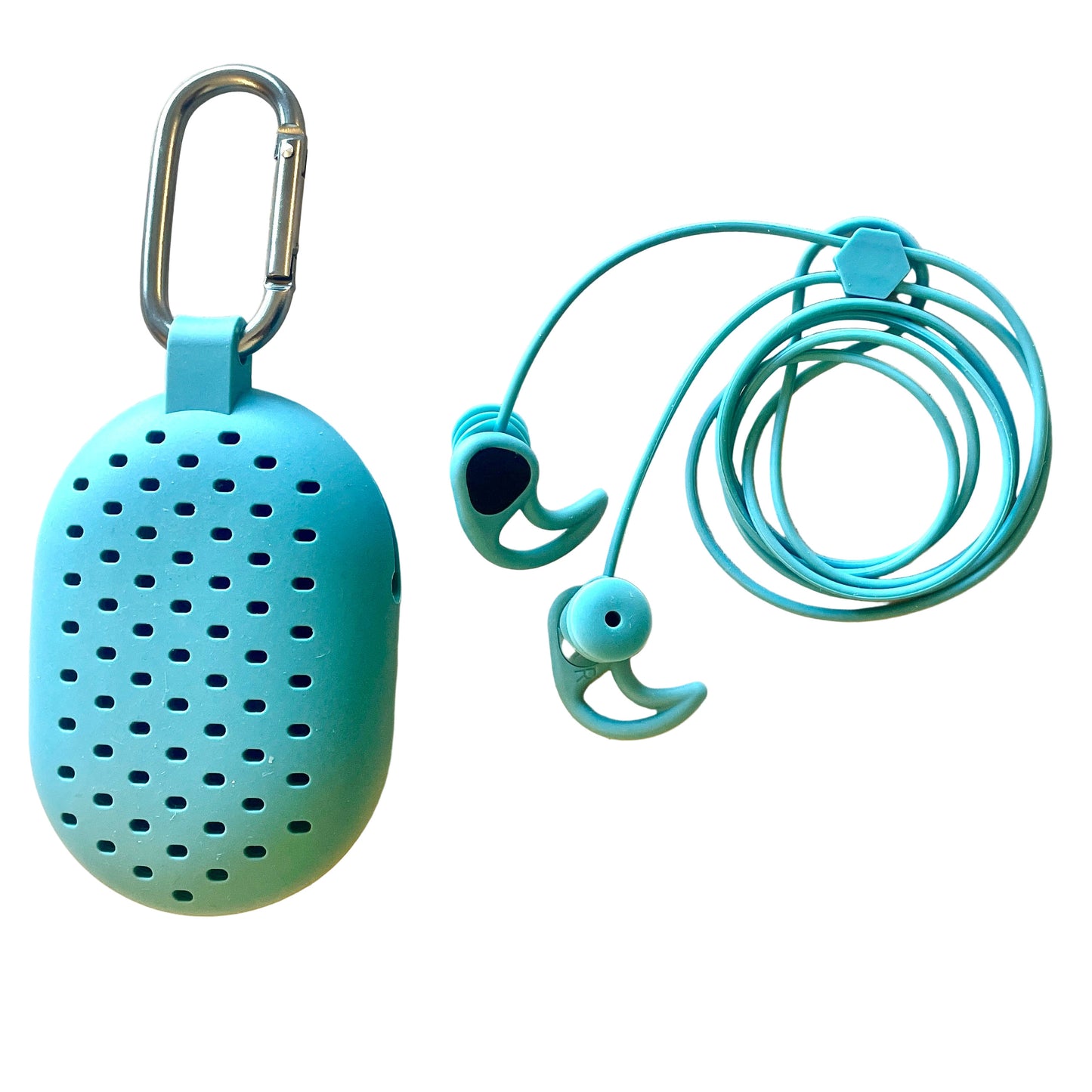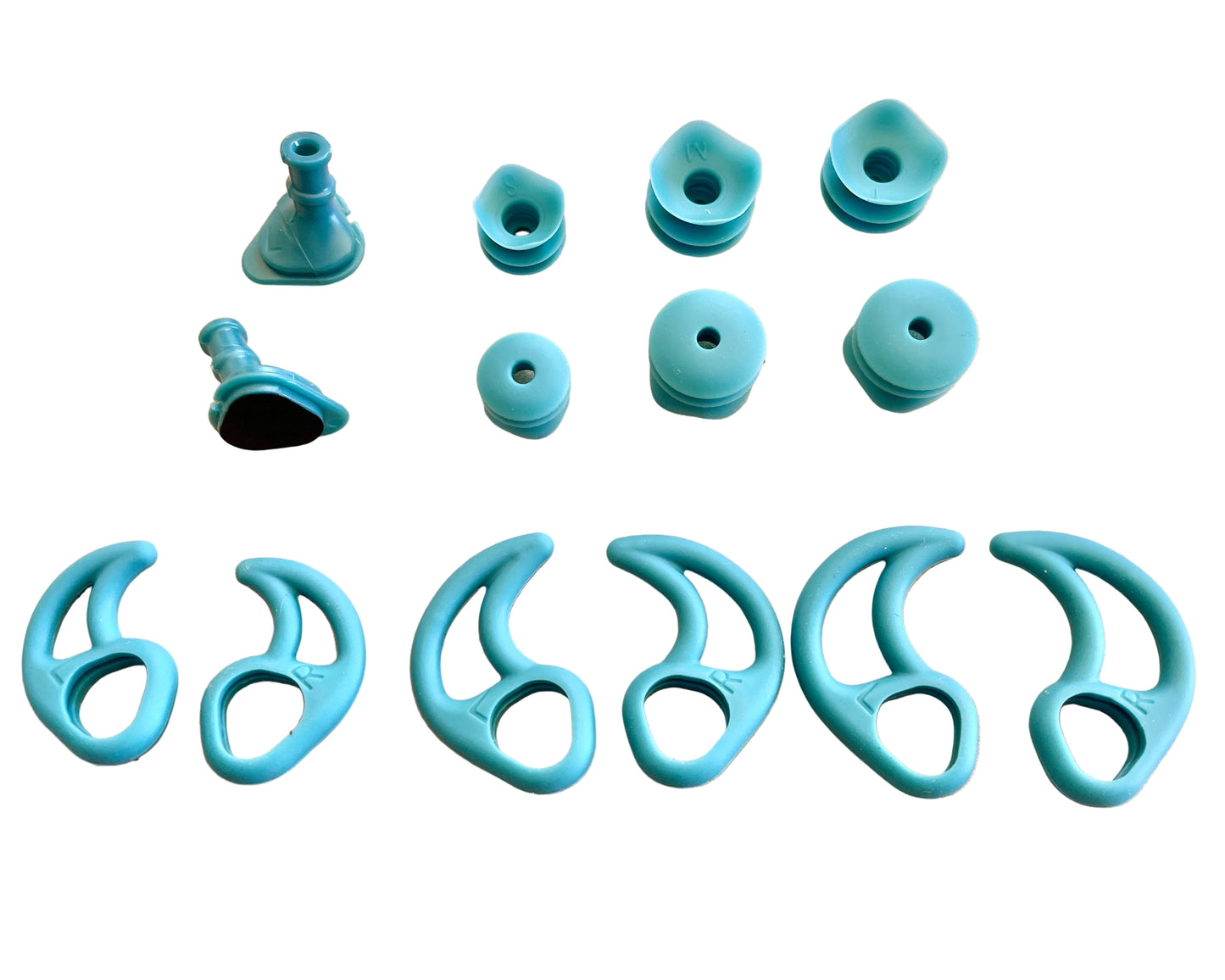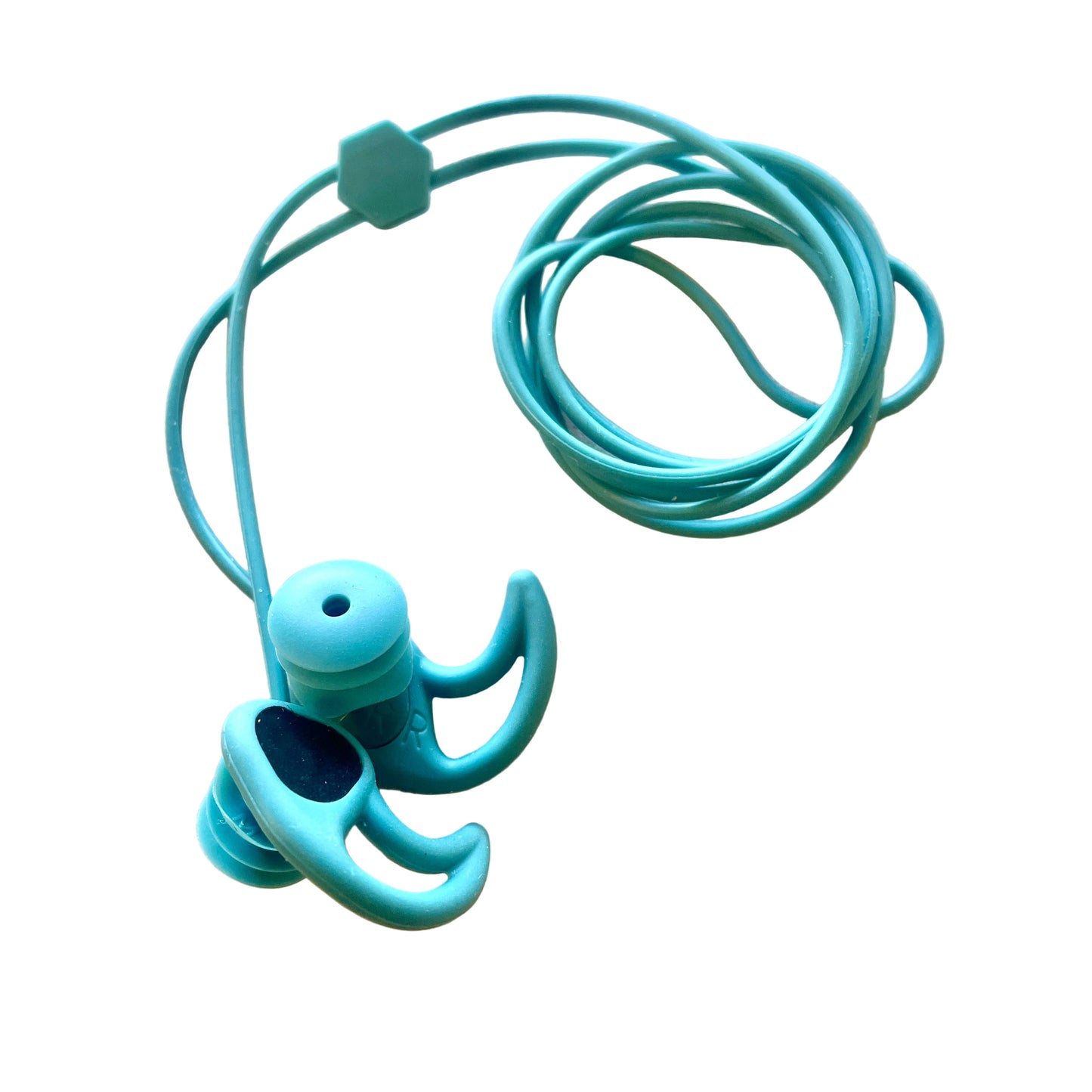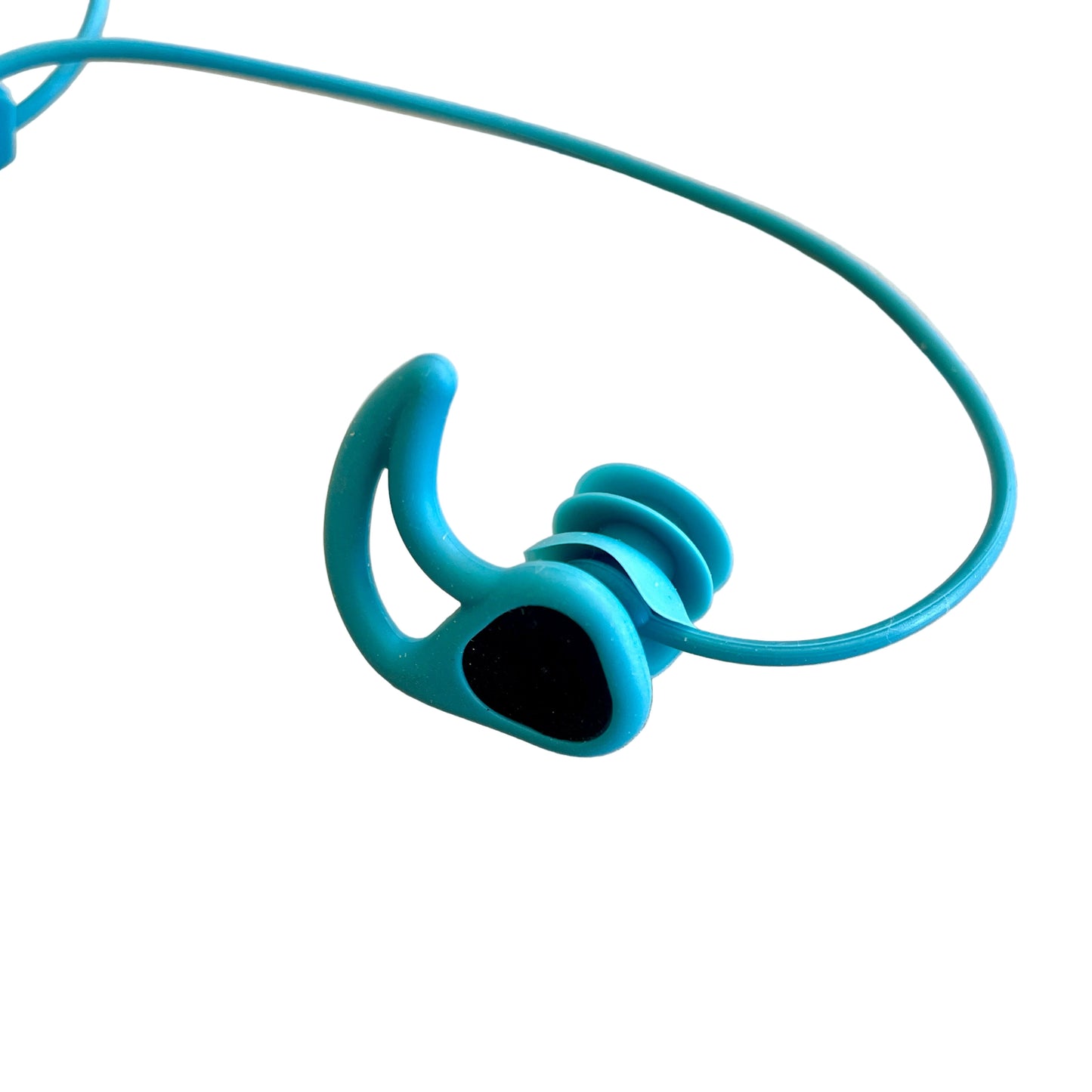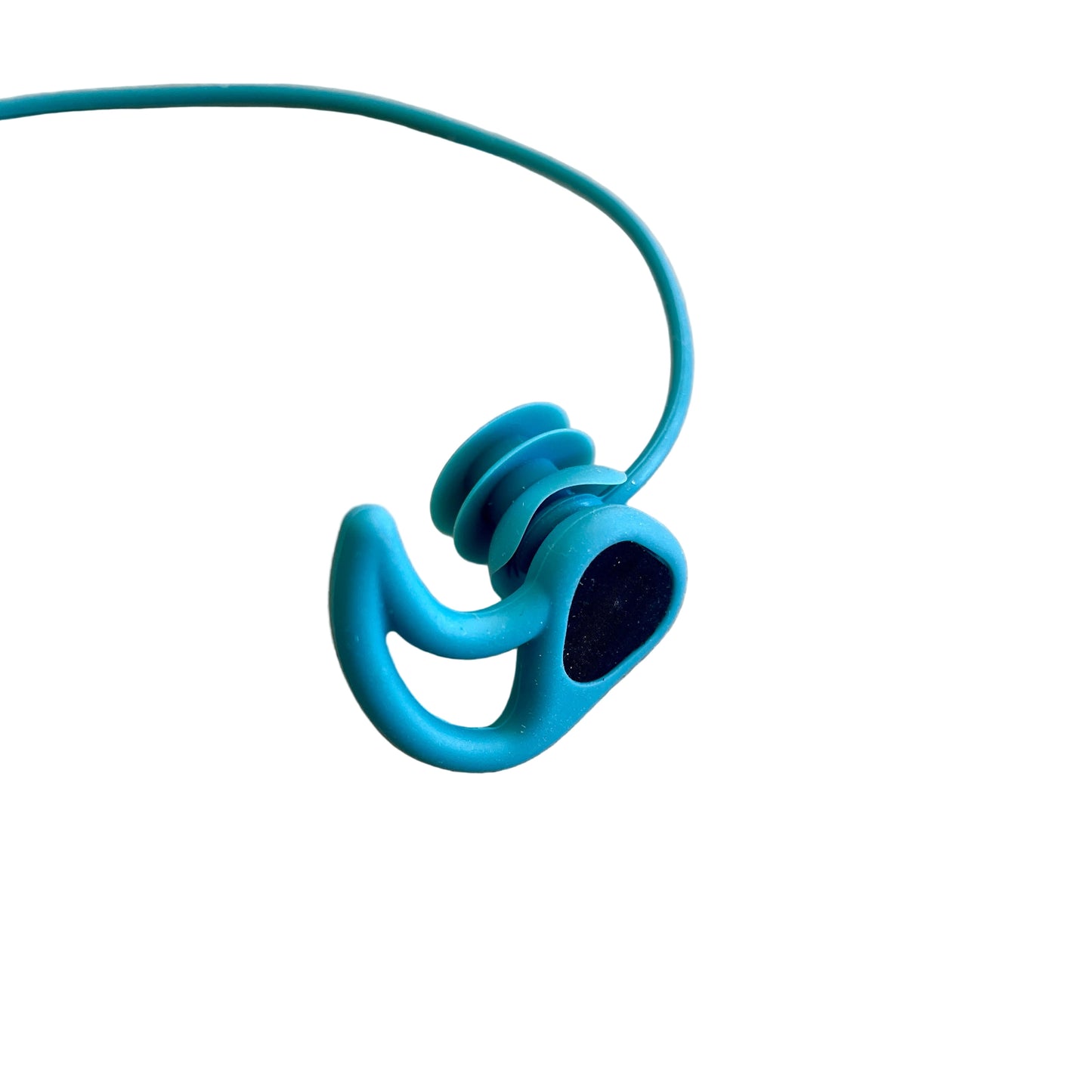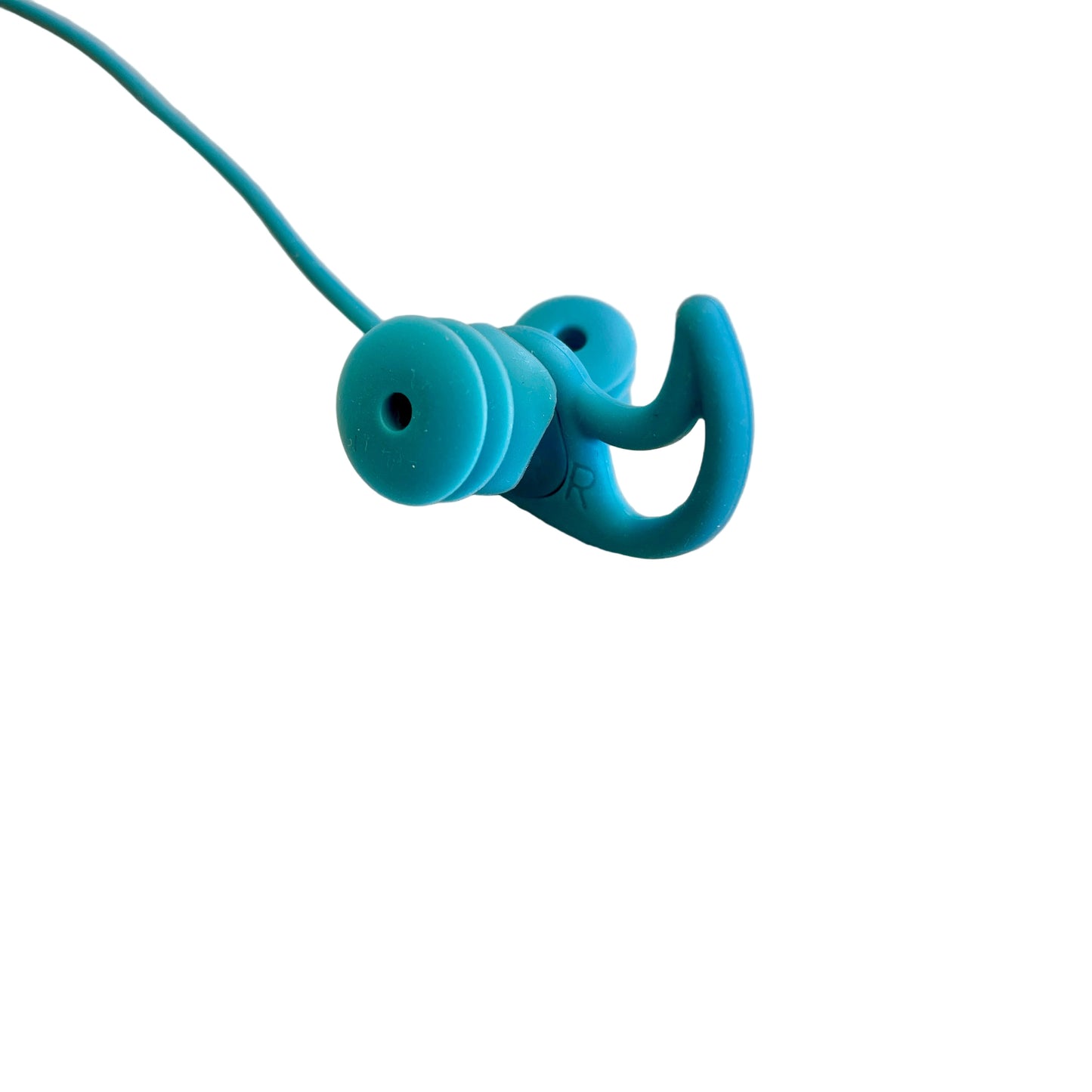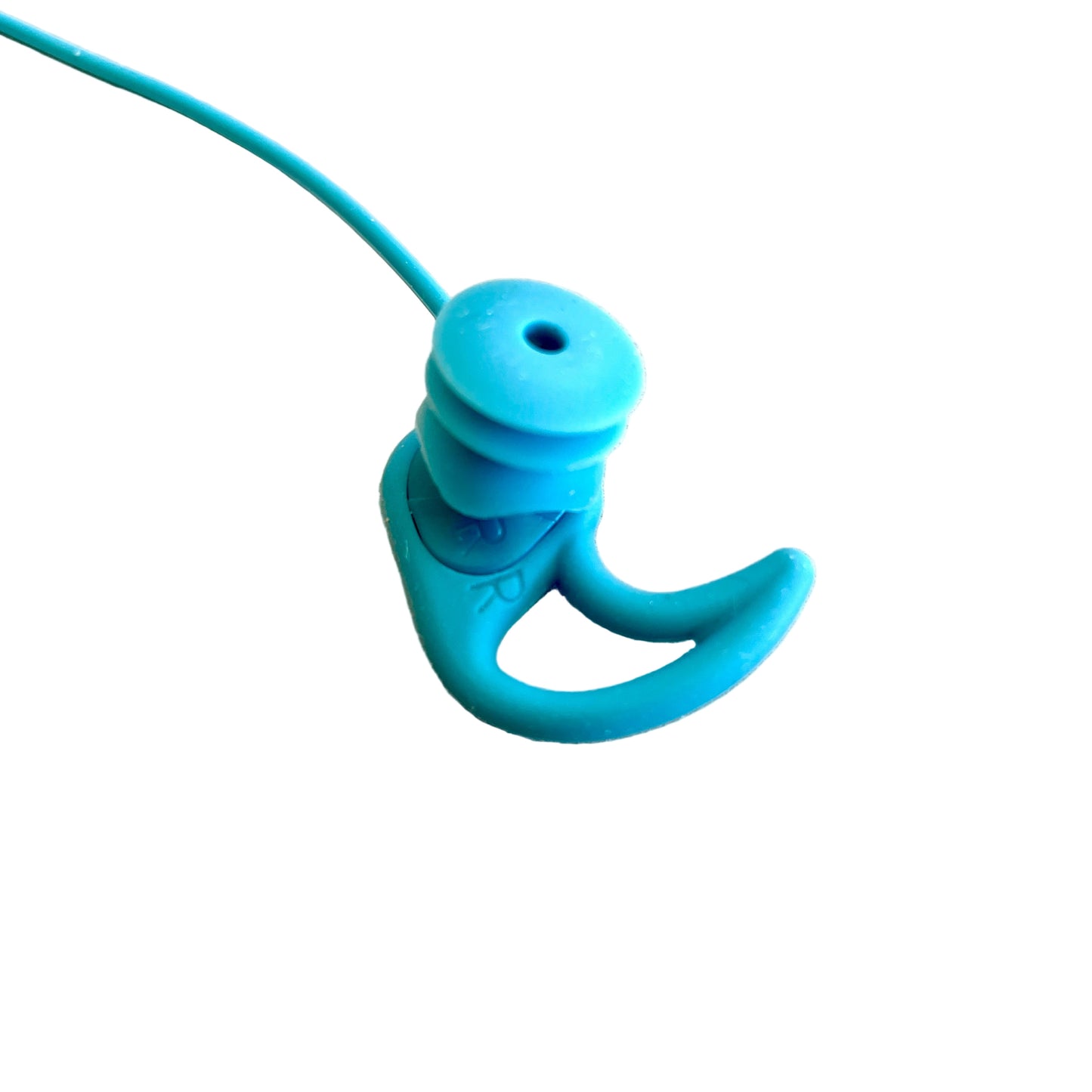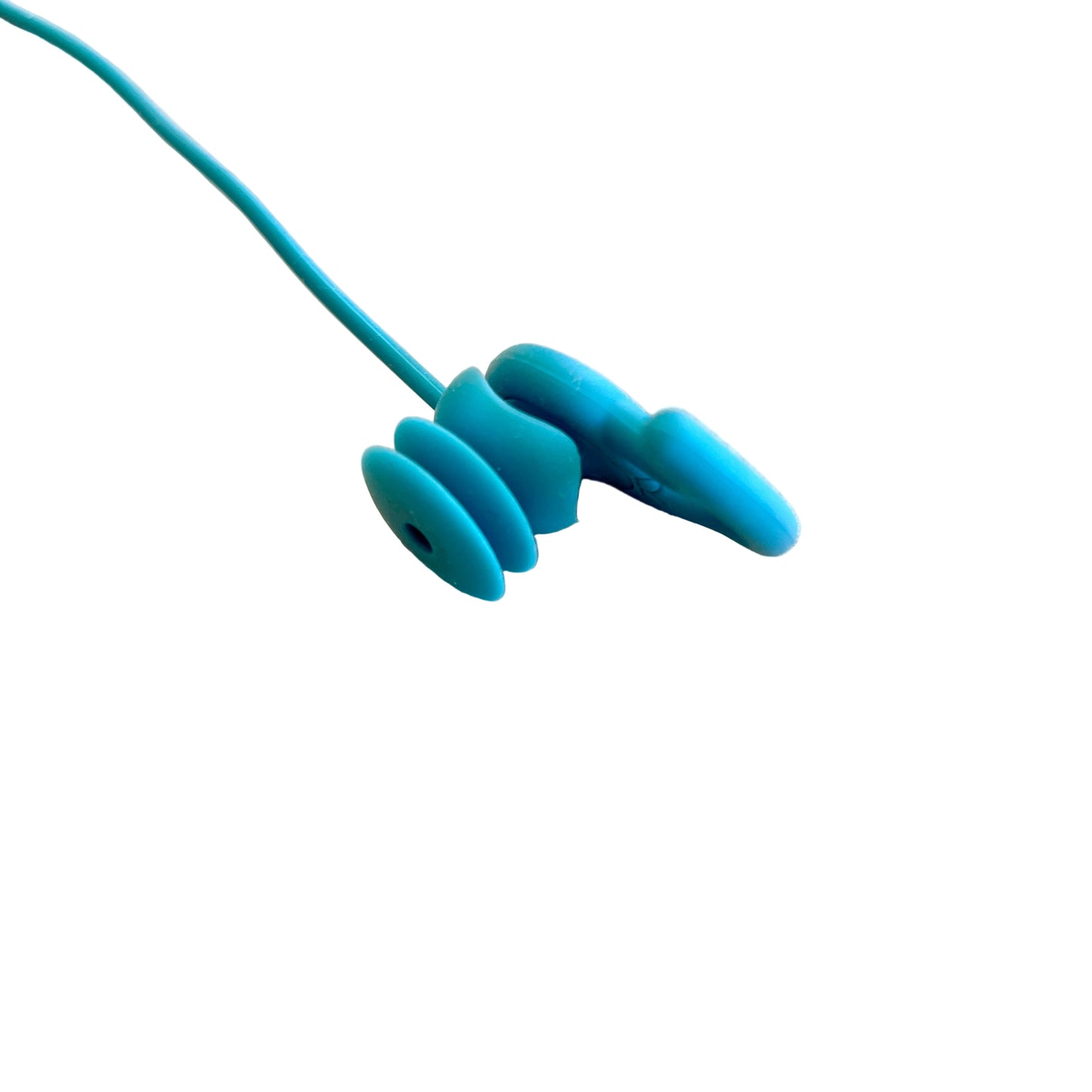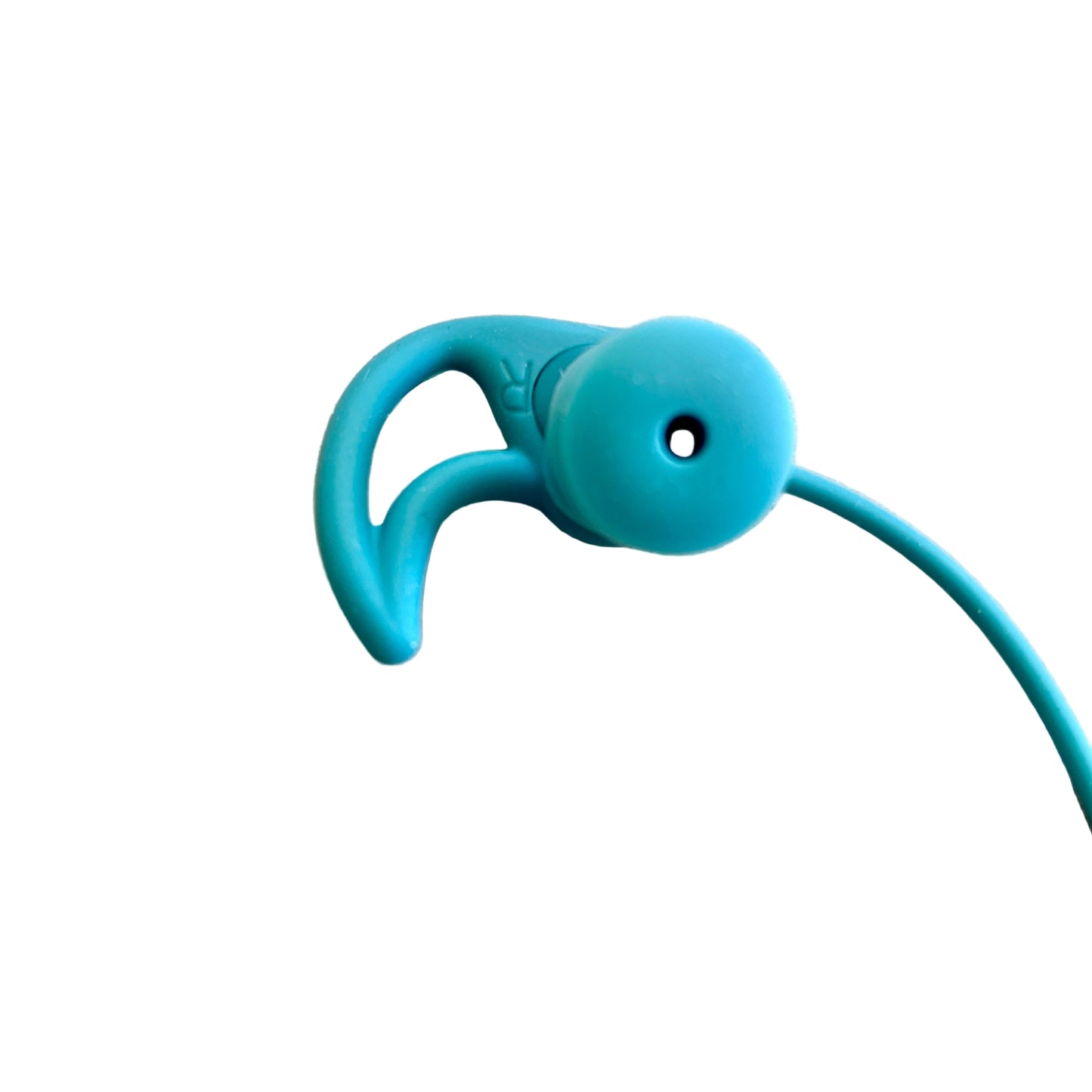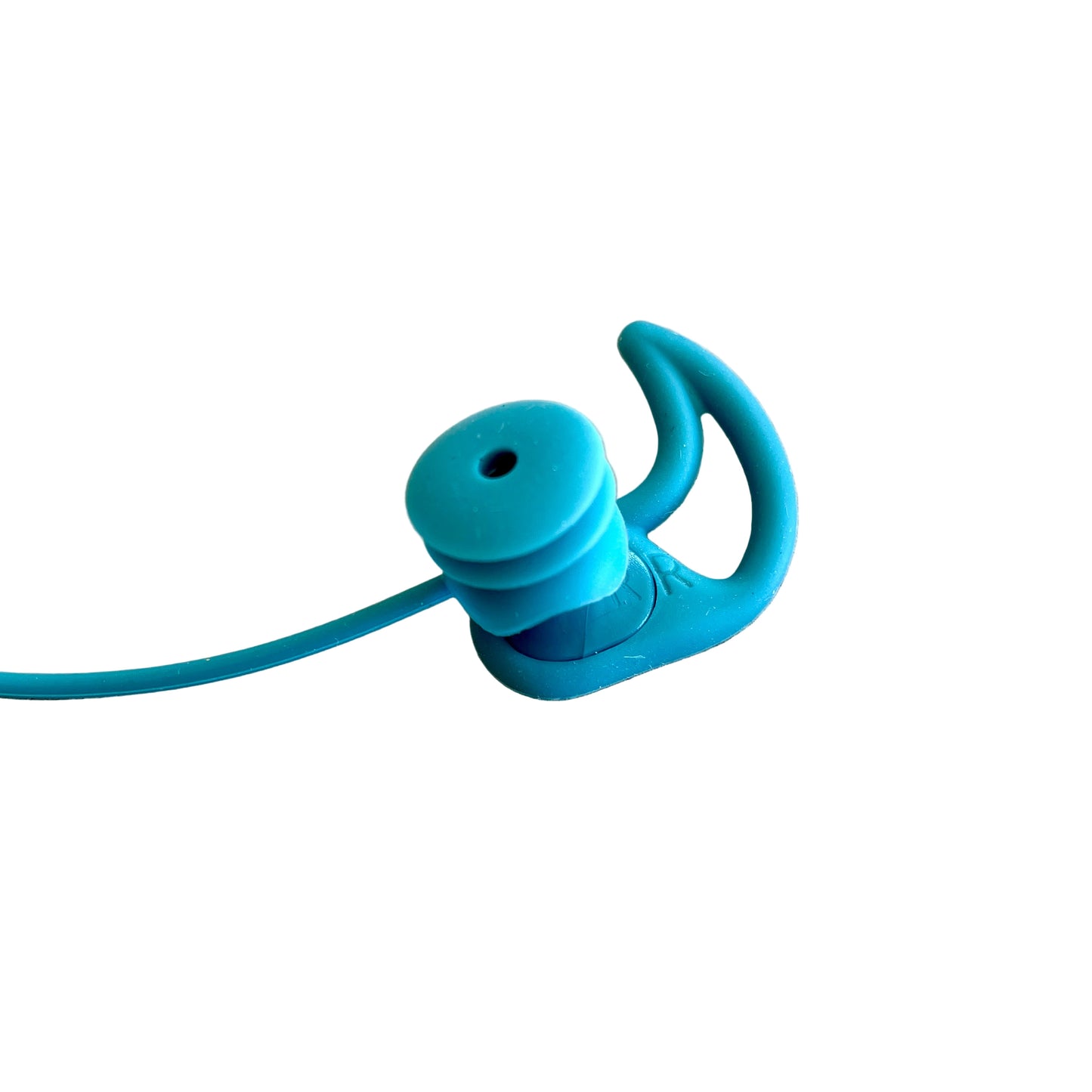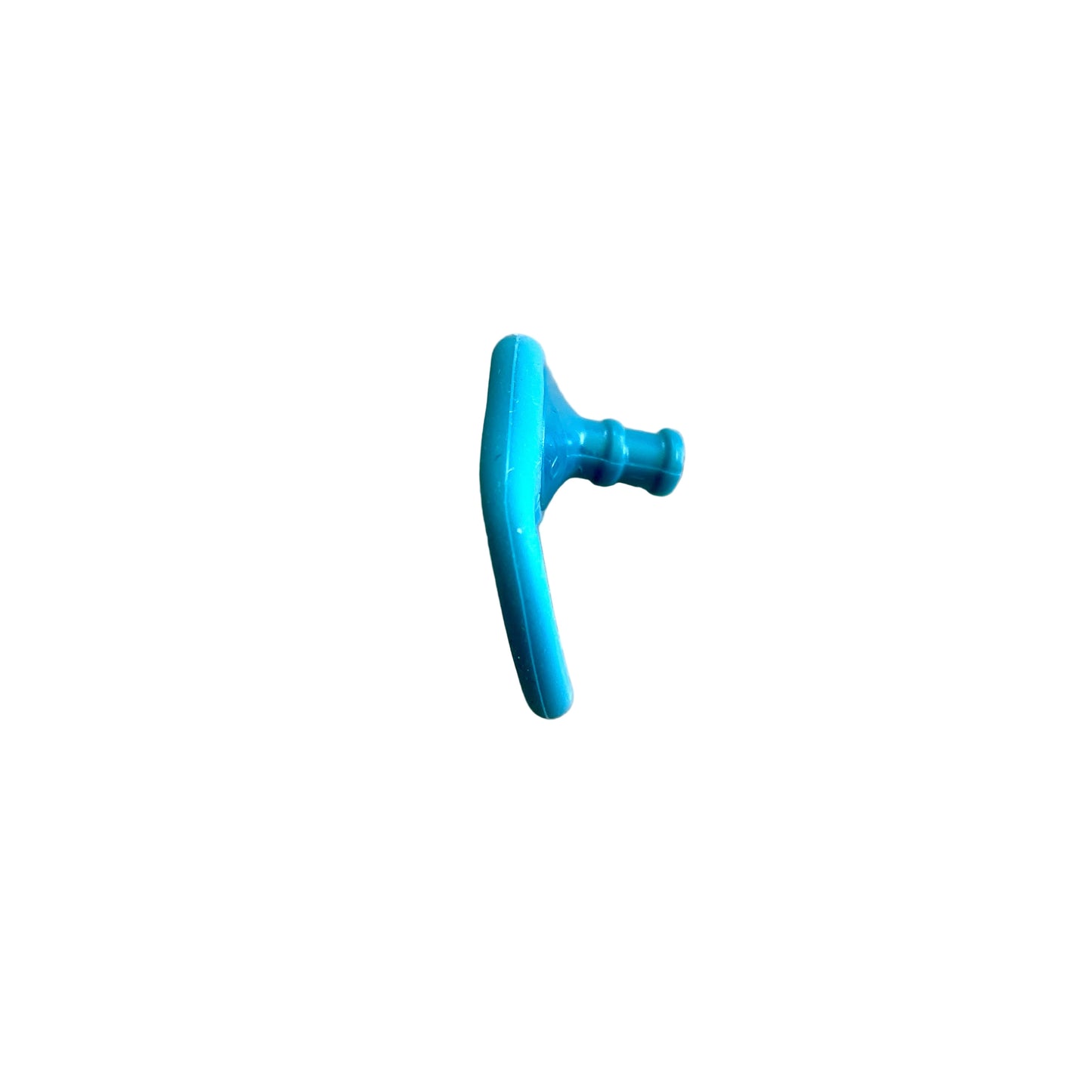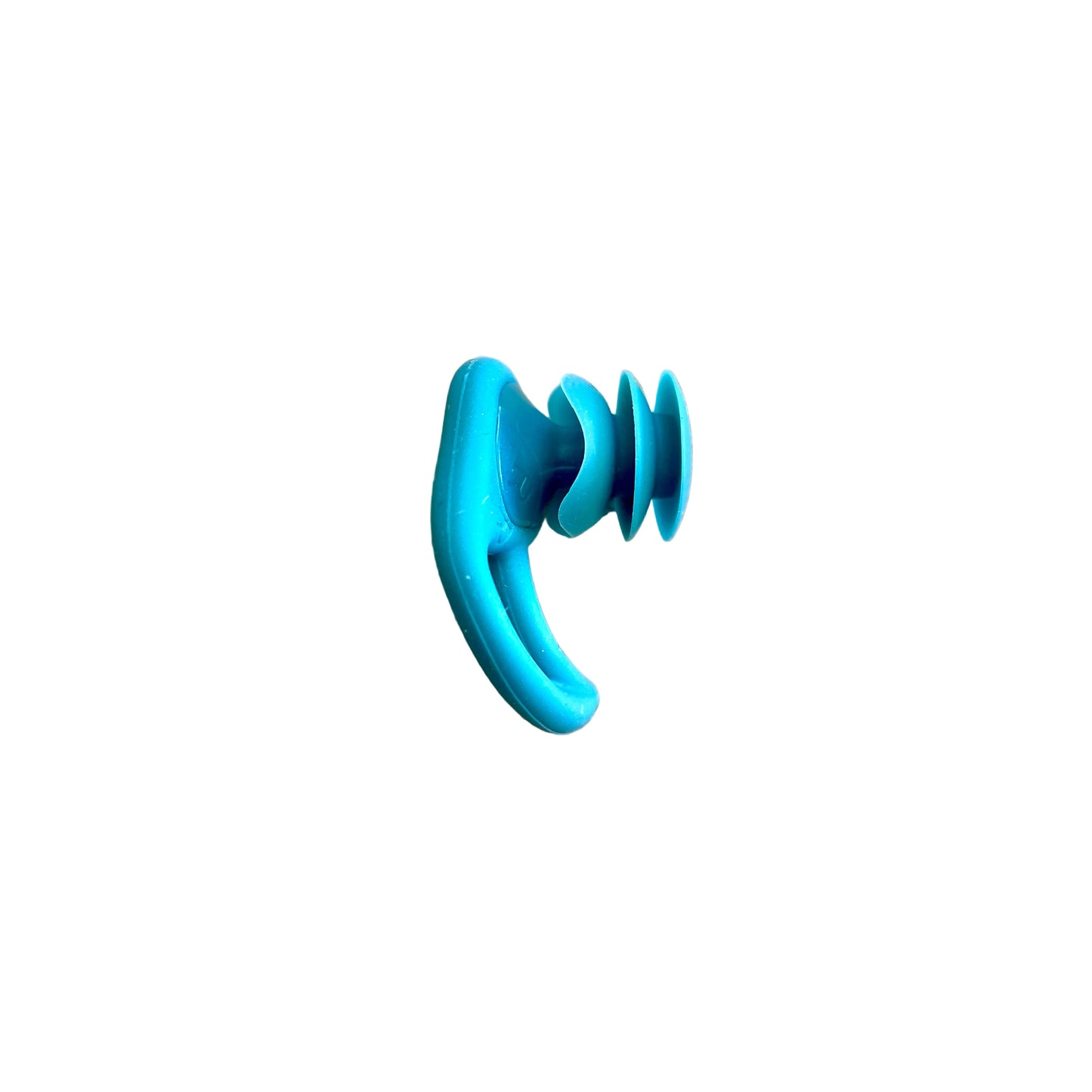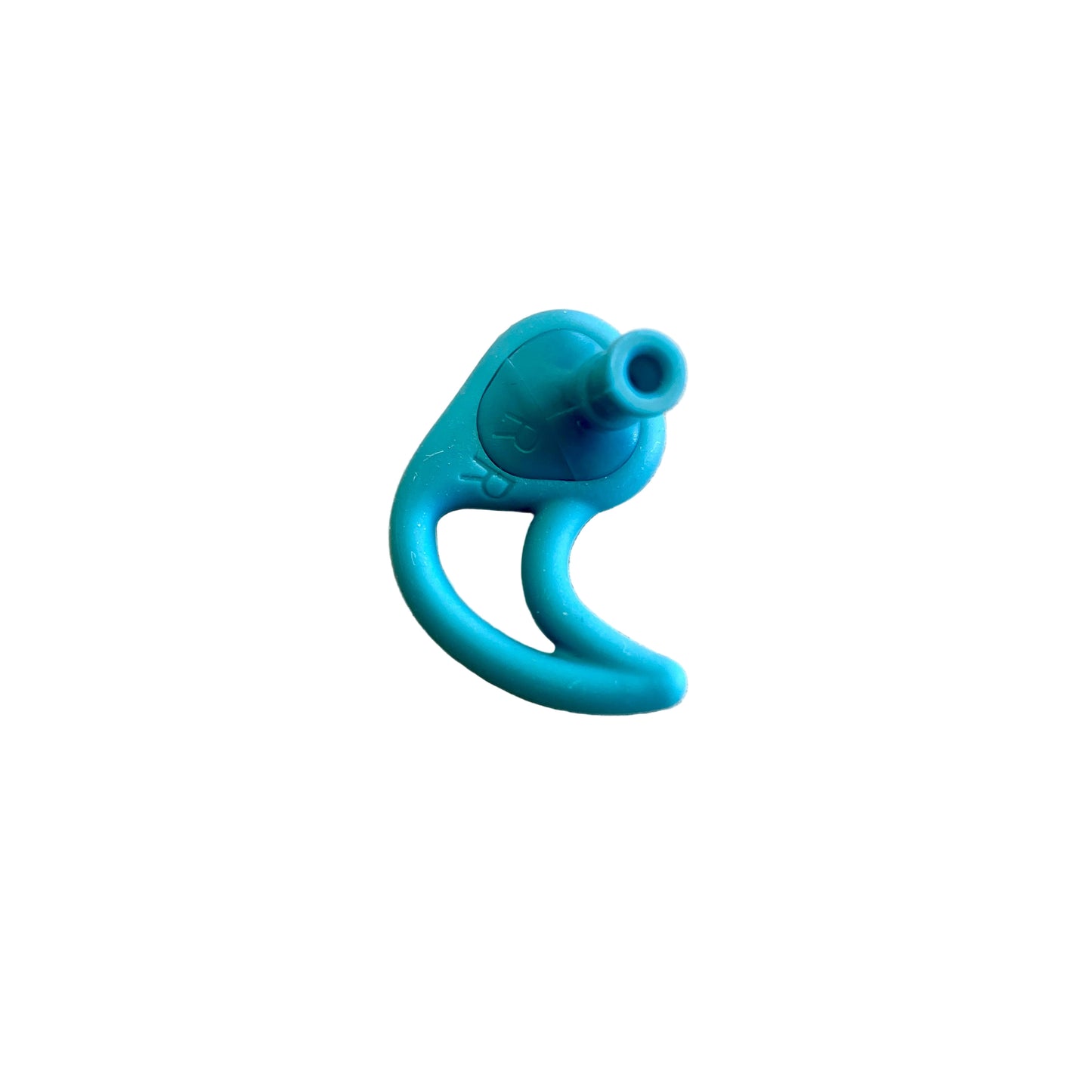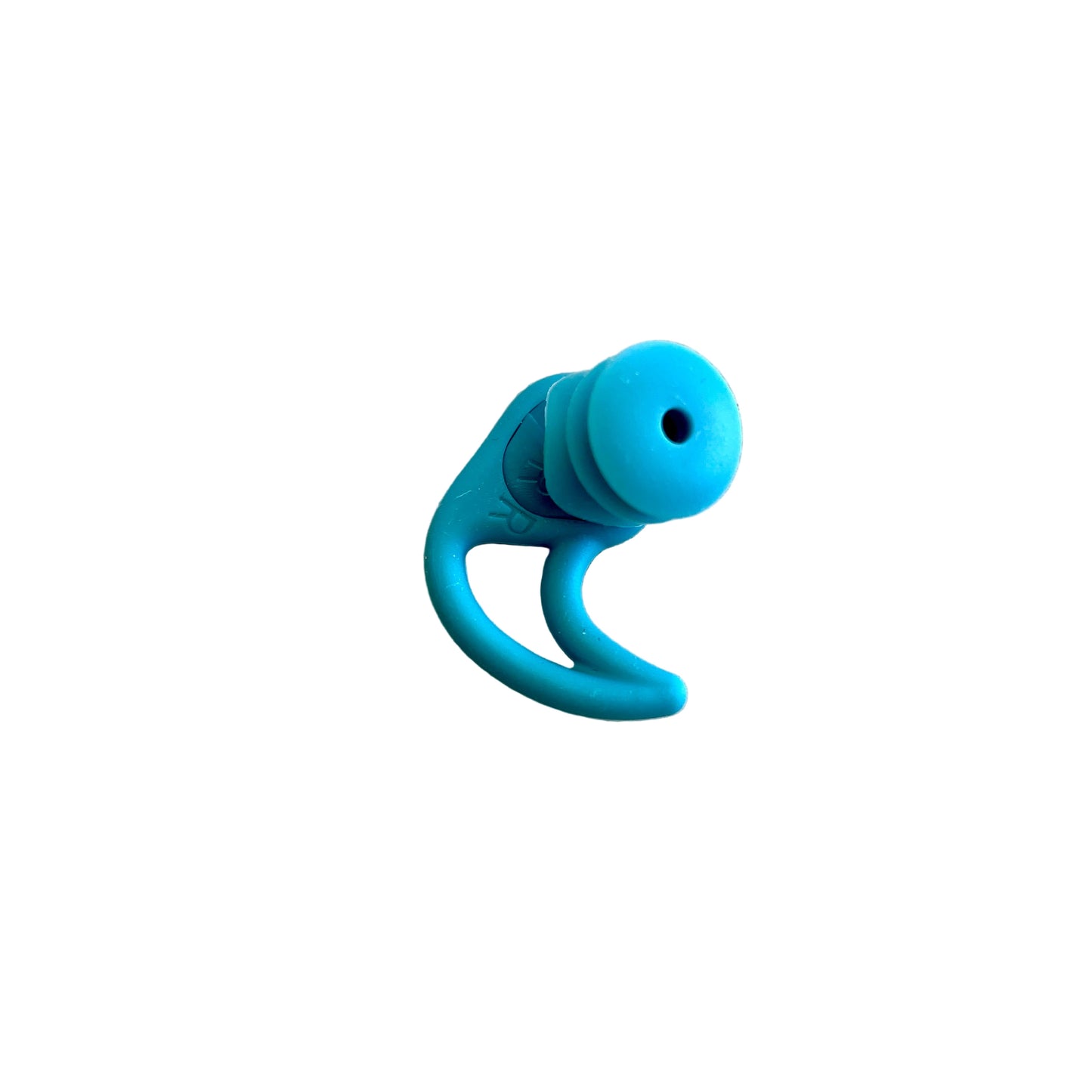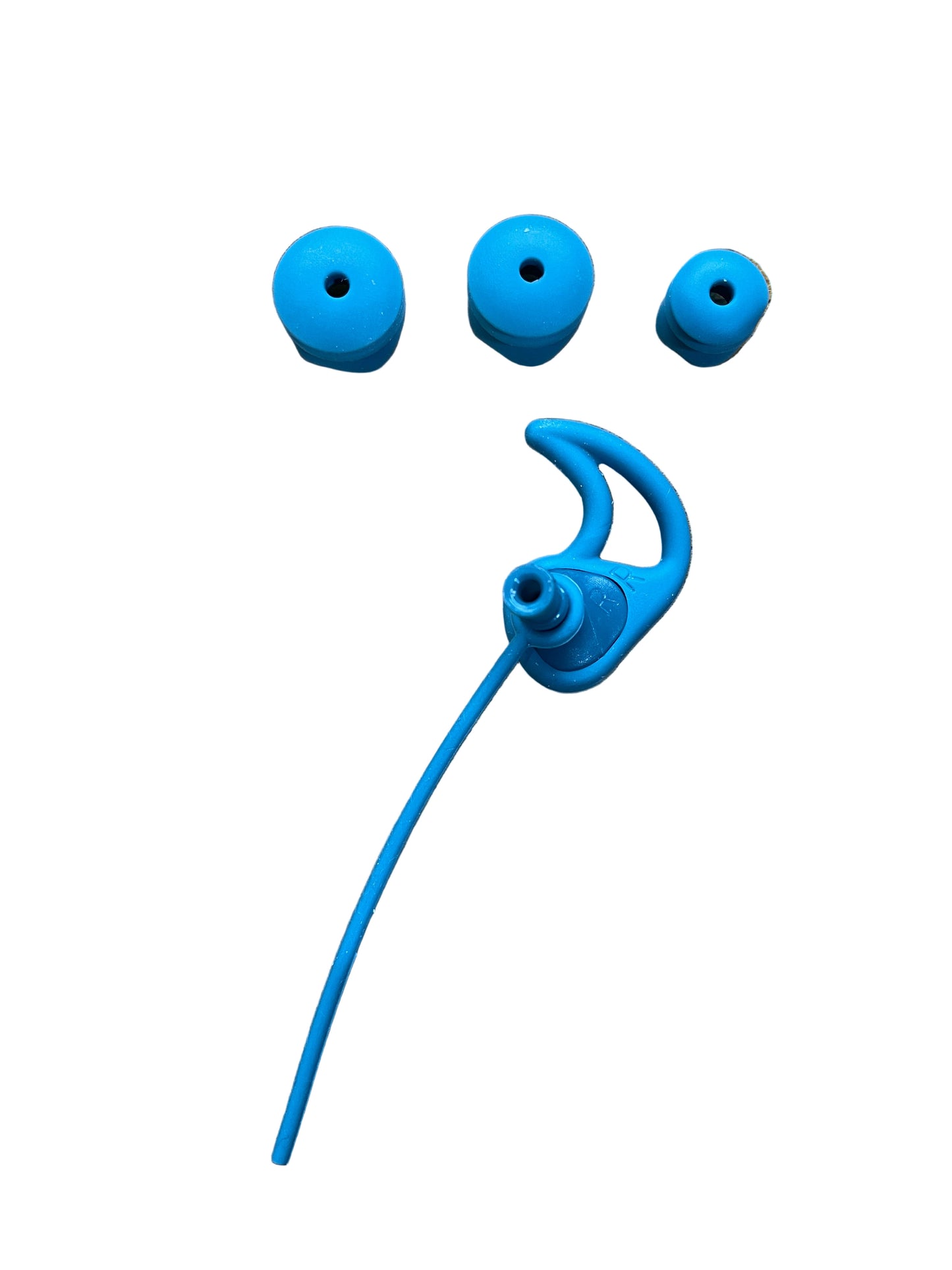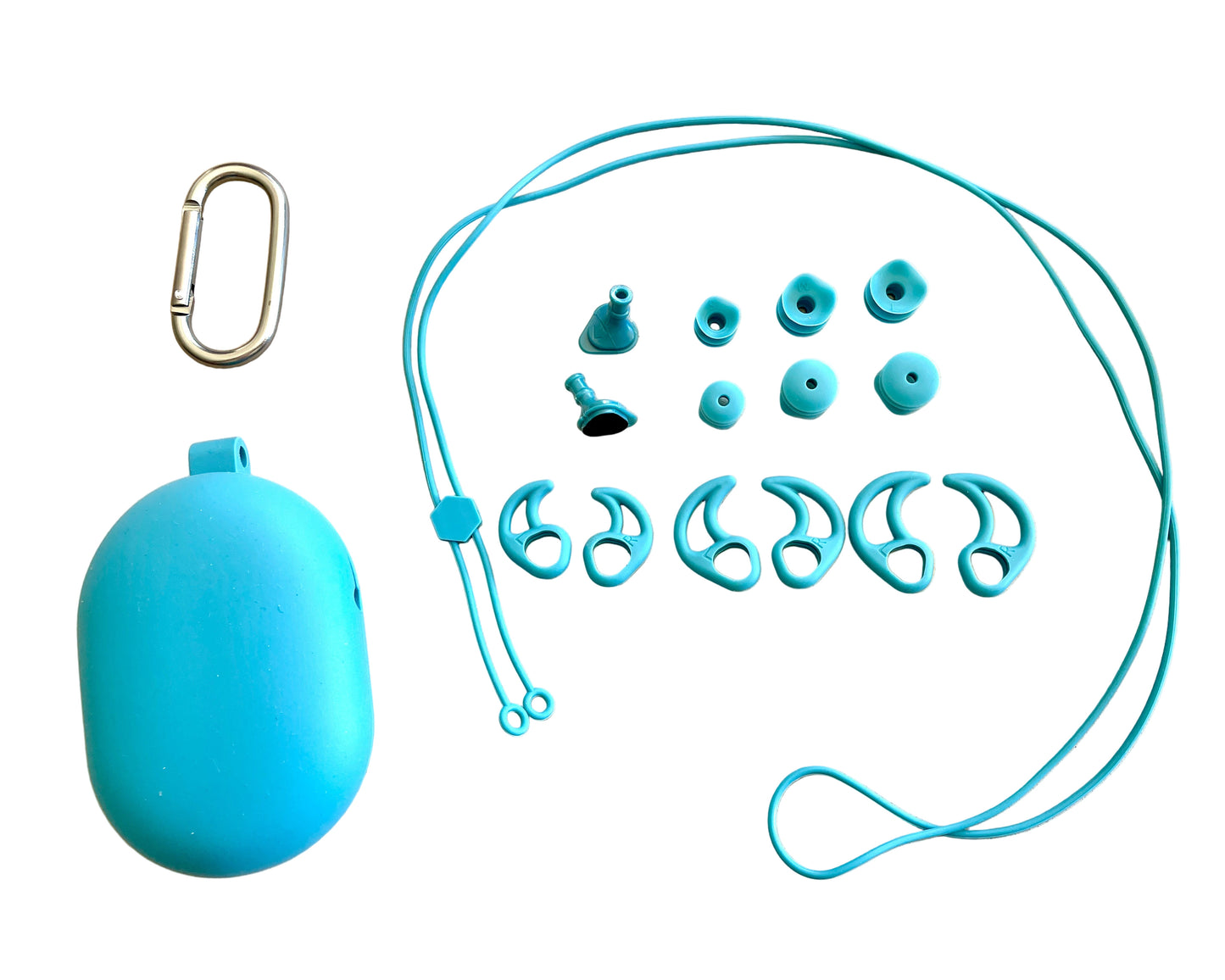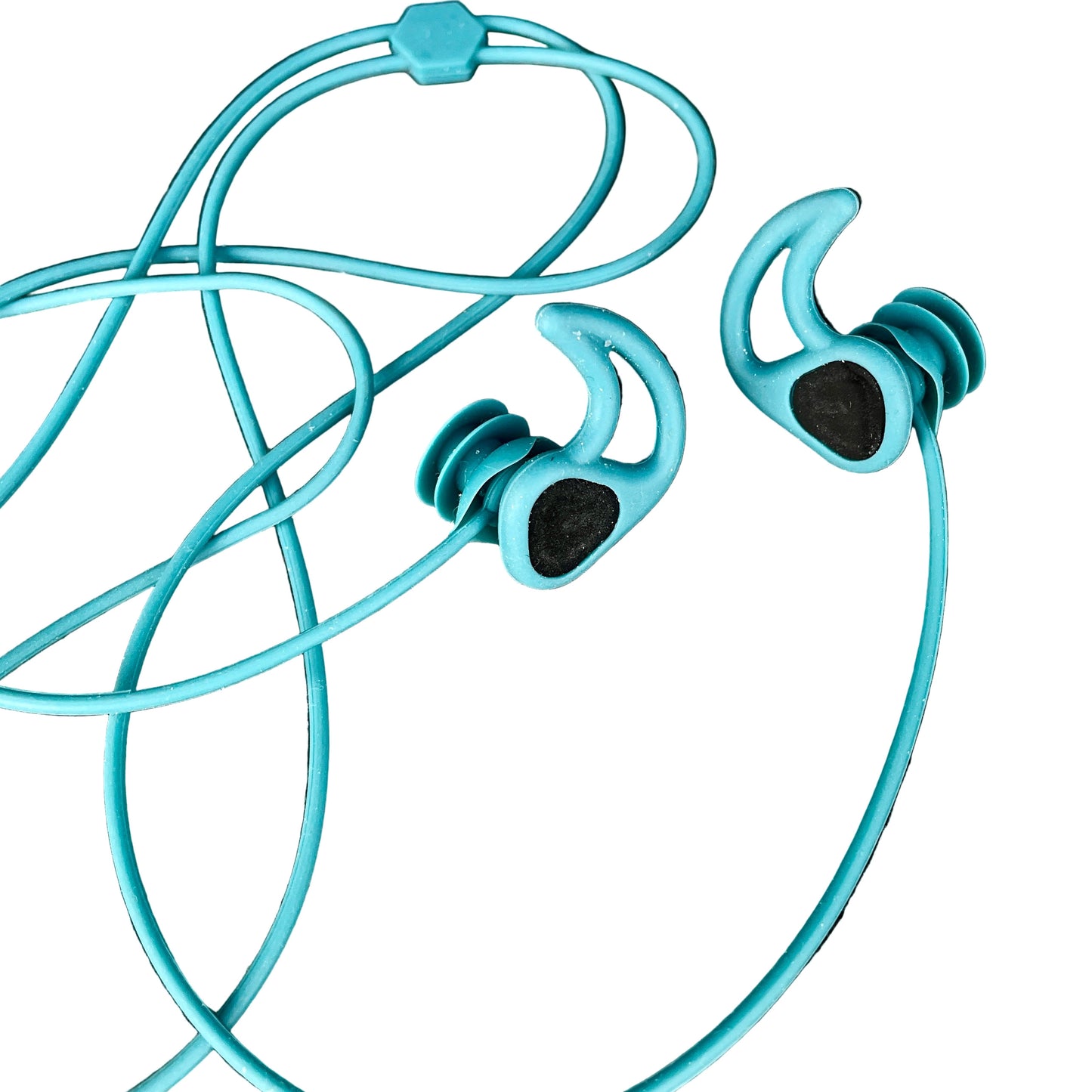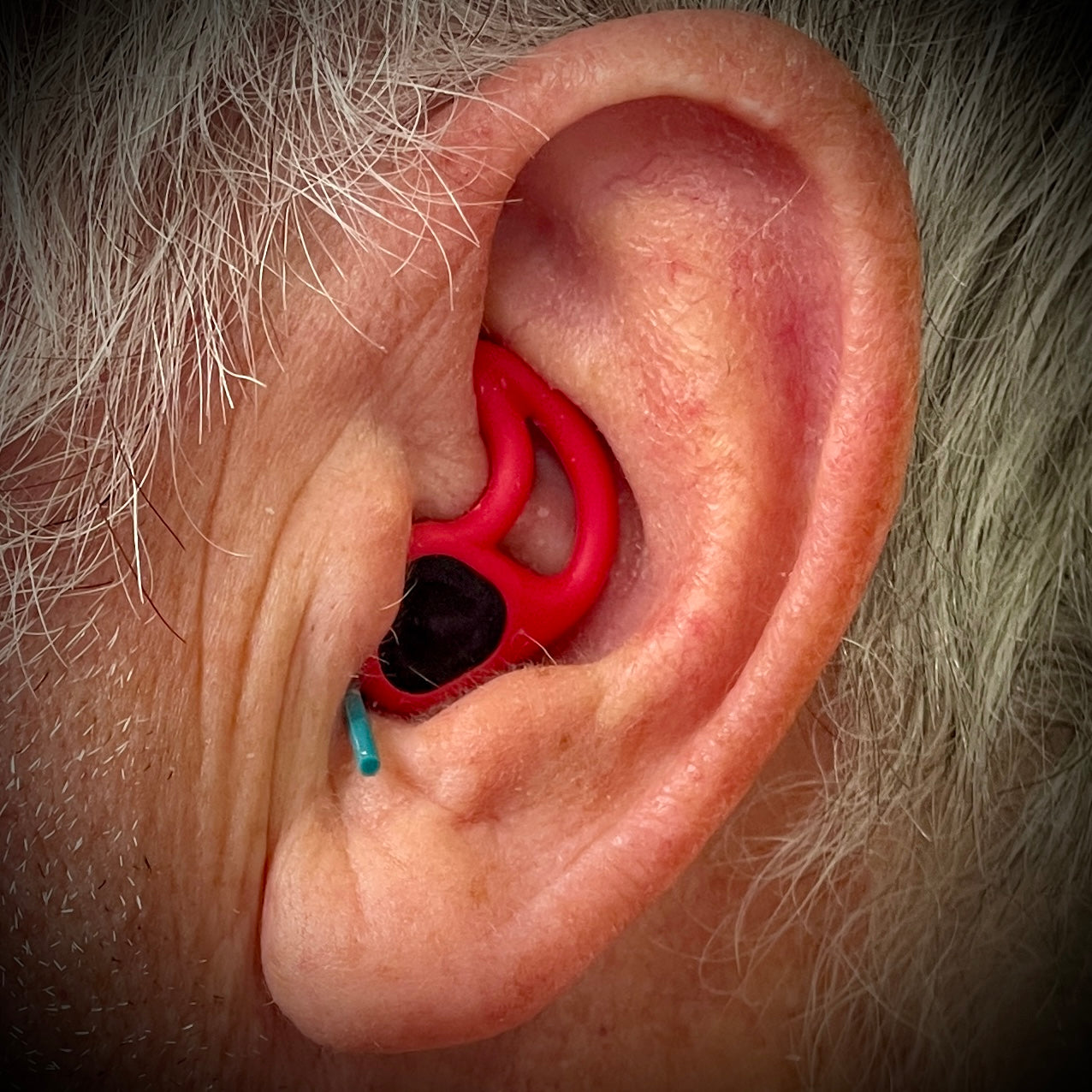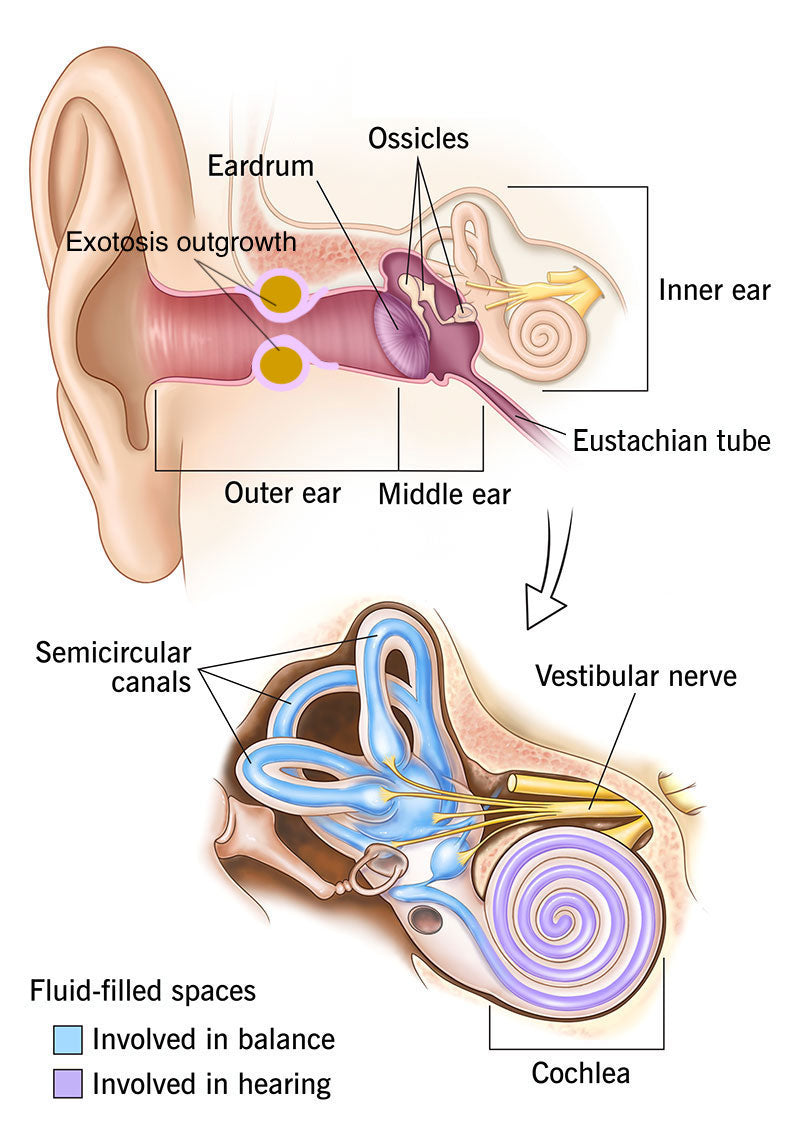Ruby Fresh — Fresh Ears
They keep water out but let sound in.
Ruby Fresh
Fresh Ears
Fresh Ears
Couldn't load pickup availability
We've done a lot of homework on ear plugs. We have trialed and experimented with many different types of ear plugs from many brands and researched many many OEM factories.
Our ‘Fresh Ears’ are the current best we have trialled, combined with a good price. They work really well. They keep water out AND you can hear what is being said in conversation. Perfect whilst prepping before getting in the water i.e. your earplugs no longer need to be the last thing you do before diving in. And being able to hear is obviously great for conversations in the water with your swim buddies.
Water Out Sound In
Water Out Sound In
The black triangular central part of the ear plug is a fine mesh which covers a secondary thin waterproof polymer membrane, which itself covers a hole running through the middle of the core module. The hole allows the transmission of sound to your ear drum. Sound is dampened by the two outer water impermeable layers but only by a few decibels. You can still hear pretty well.
The three size swappable silicon gaskets do the job of keeping the water out. You use the right size gasket depending on the left or right ear canal size.
Ergonomics
Ergonomics
Each ear plug is handed left or right.
The bend in the hook is also handed, left or right. This ensures the hook sits in towards the ear, rather than sticking out away from the ear and sits properly in the ‘front flap’ of your ear. See image.
UnBoxing
UnBoxing
Each set consists of a core module which is the part that incorporates the membrane, allowing sound to pass to your eardrum, but not water.
Plus, three sizes of soft silicon gaskets (Sm, Md, Lg) which fit into your ear canal.
Three sizes of ear hooks to keep the Fresh Ears secure in the fold of your ear.
A leash/cord (optional use) to hang the ear plugs around your head or neck, and to prevent loss should they somehow fall out.
A silicone storage case with ventilation holes for drying and a little carabiner for attachment.
Assembly
Assembly
Some fiddling around is required to get each ear plug just right. You will need to assemble and swap hook sizes and gasket sizes as appropriate for each ear. You may well find you use different hooks and gaskets on each ear.
Each hook and each core module has either a L or R marked on it. You need to make sure the L core module goes with the L marked hook, of whichever size. Same for the R side. The ear gaskets have a very small S, M or L marked on the inside. It's real small but it's there. The M and L look the same size at first sight but they are different.
You will see a notch in the core module on one of the triangular sides which aligns with an internal tab on the hook so you can get orientation of the hook correct.
Once the hook is on the core module, add the retention cord, if required, and finally the gasket of the correct size for each ear.
Usage Options
Usage Options
You may find the cord gets in the way with it around your neck. A tip for the cord position if you find it annoying is to place it around your head, secured with the tightener, rather than your neck. Then tuck all the excess all away nice and tidy under your swim cap.
What if you don’t particularly need the earplugs draped around your head/neck before or after your swim. Why use the cord at all? True, there's no absolute need for the cord, the Fresh Ears, particularly with the correct hook, stay in the ear well.
However they can be a little tricky to extract without the cord as there is not much to pull on or dig them out with, so another option is to cut the cord to about 30mm - 40mm long. When you come to remove the plugs after your swim, you simply pull on the short length of cord. See image. Easy. But don’t drop them!
Why Use an Ear Plug?
Why Use an Ear Plug?
There are perhaps more reasons than you might think, past the obvious 'to keep water out of my ear'.
Many people simply don't like water going in and out of your ear. That’s one reason — comfort.
Cold water going in and out of the ear can cause exostosis — surfers' ear. That's another reason. Read below.
But another lesser known reason is prevention of loss of balance whilst finishing a swim in the transition to standing up. The constant sloshing of water back and forth against the eardrum, when moving your head whilst breathing, upsets the balance section of the ear — the semicircular canals. An earplug prevents this so that when you come to stand up out of your swim, your balance is intact. Did you know that?
Surfers Ear
Surfers Ear
This is where an internal bone section in the ear canal swells due to repeated exposure to cold water and wind. Wearing earplugs for swimming in cold water can help prevent exostosis.
Exostosis, is a benign bony outgrowth, a bone spur that can affect various parts of the body, such as the ear — and is often called "surfer's ear". It is essentially a bony spur covered with cartilage.
These bony growths can cause problems like pain and inflammation due to pressure on surrounding tissues or by trapping debris and water leading to ear infections. Prevention, like wearing ear plugs is common. In severe cases of surfer's ear, the ear canal can become blocked, leading to repeated infections and hearing loss.
Surgical intervention may be recommended for exostoses for severe cases or complications that cause pain or significantly close the ear canal.
Left over parts
Left over parts
While it's true that once you have decided on the best fit of both the inner silicon widgets that go in your rear canal, combined with the correct size hook to secure the ear plug behind the frontal ear flap, what do you do with all the leftover parts?
Why not offer these plugs as a one size product so there are no left over parts? Because, many people need to experiment for size with both the inner gasket and the external hook and it’s more common than you'd expect how many people need different size parts between the left and right ear. So if you need a medium gasket for one ear and a small gasket for another you need to buy two sets of ear plugs. And that's not ideal.
So leftover parts are the only possible solution. But all is not lost in the sustainable world as perhaps a friend has the same type of plug that uses this form of inner gasket. You can do a trade if they need another one, and vice versa.
Other Earplug Options
Other Earplug Options
Many people use Blu-tac. It’s actually a pretty good solution truth be told!
A nicer option are the squidgy silicon pastels which we also sell. The silicon is nicer in the ear than blu-tac but the silicon moldable pastels have a finite life after you’ve pushed them in and out of your ears a number of times. We find about 3 weeks per pastel per ear is about all the life you will get, for say 3 swims a week.
Another option is the ‘Xmas Tree’ earplugs which are really good for keeping the water out as you are able to secure them well into the ear canal. But you really can’t hear anything much once they are in. We also sell those here.
Share
